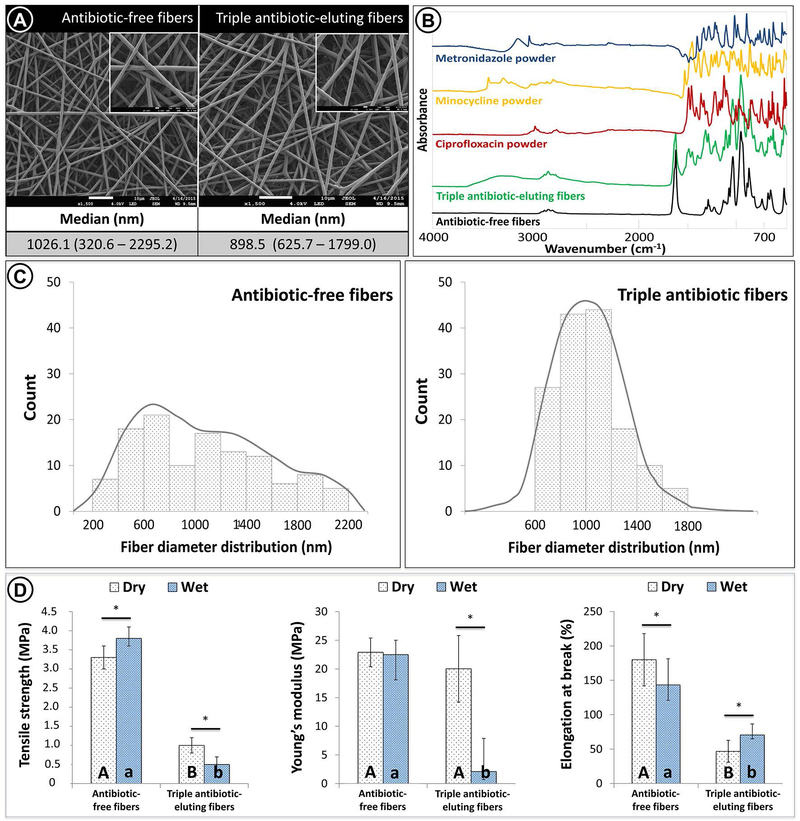FIGURE 4.
(A) SEM micrographs of antibiotic-free and triple antibiotic TA-eluting fibers, both showing a porous structure and smooth morphology with similar median fiber diameter. (B) FTIR spectra demonstrated antibiotic incorporation into the TA-eluting fibers. (C) Antibiotic-free fibers showed a wider range of diameter distribution (heterogeneous) compared with TA-eluting fibers, which displayed a gaussian distribution (homogeneous). Regarding the mechanical analysis (i.e., tensile strength, Young’s modulus, and elongation at break) (D), statistically significant differences between antibiotic-free fibers and TA-eluting fibers were seen (represented by different uppercase [dry condition] and lowercase [wet condition] letters [P < .05]). In detail, under dry conditions, the TA-eluting fibers demonstrated lower tensile strength and elongation at break (P <.05) when compared with antibiotic-free fibers, although presenting with a similar Young’s modulus (P > .05). After hydration, lower mechanical properties (P <.05) were obtained for the antibiotic-eluting fibers when compared with the antibiotic-free fibers. Asterisk (*) above bar columns indicates statistically significant difference between dry and wet storage conditions (P < .05).

